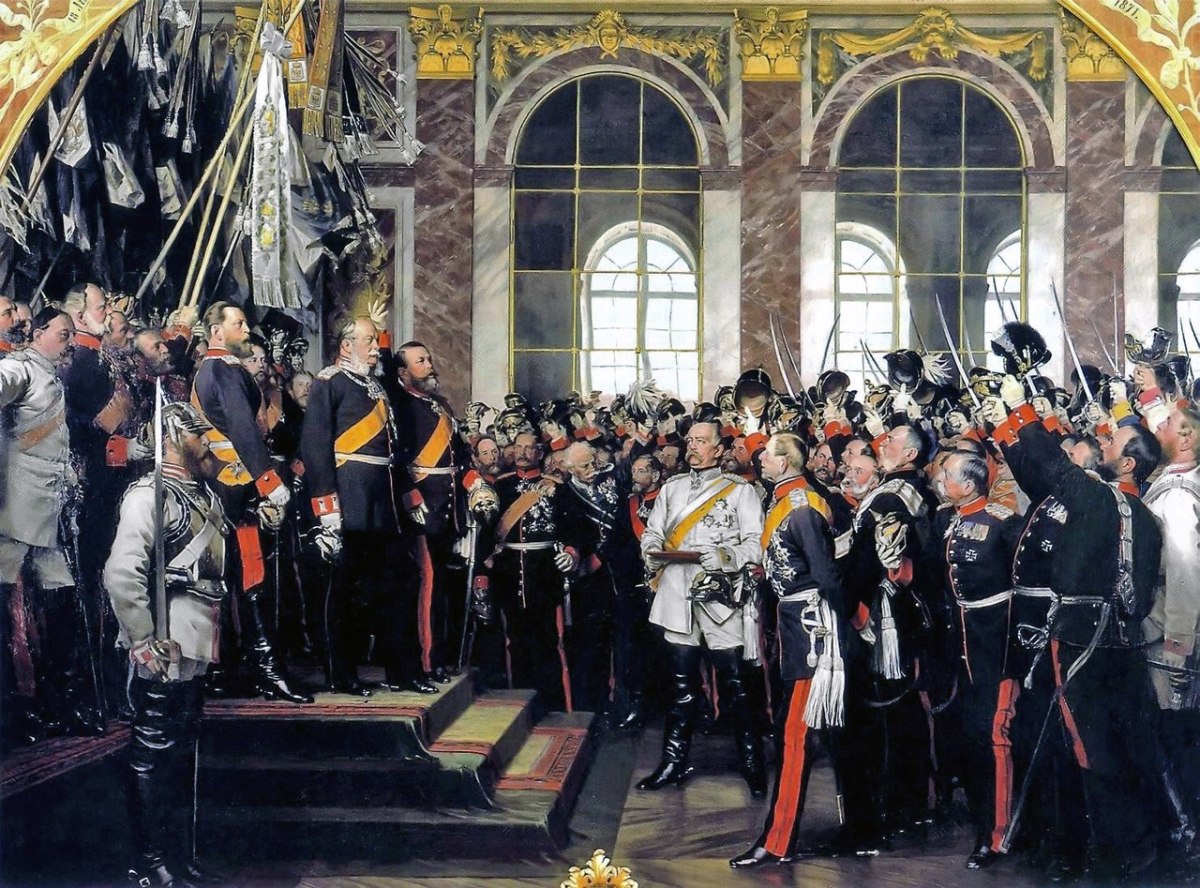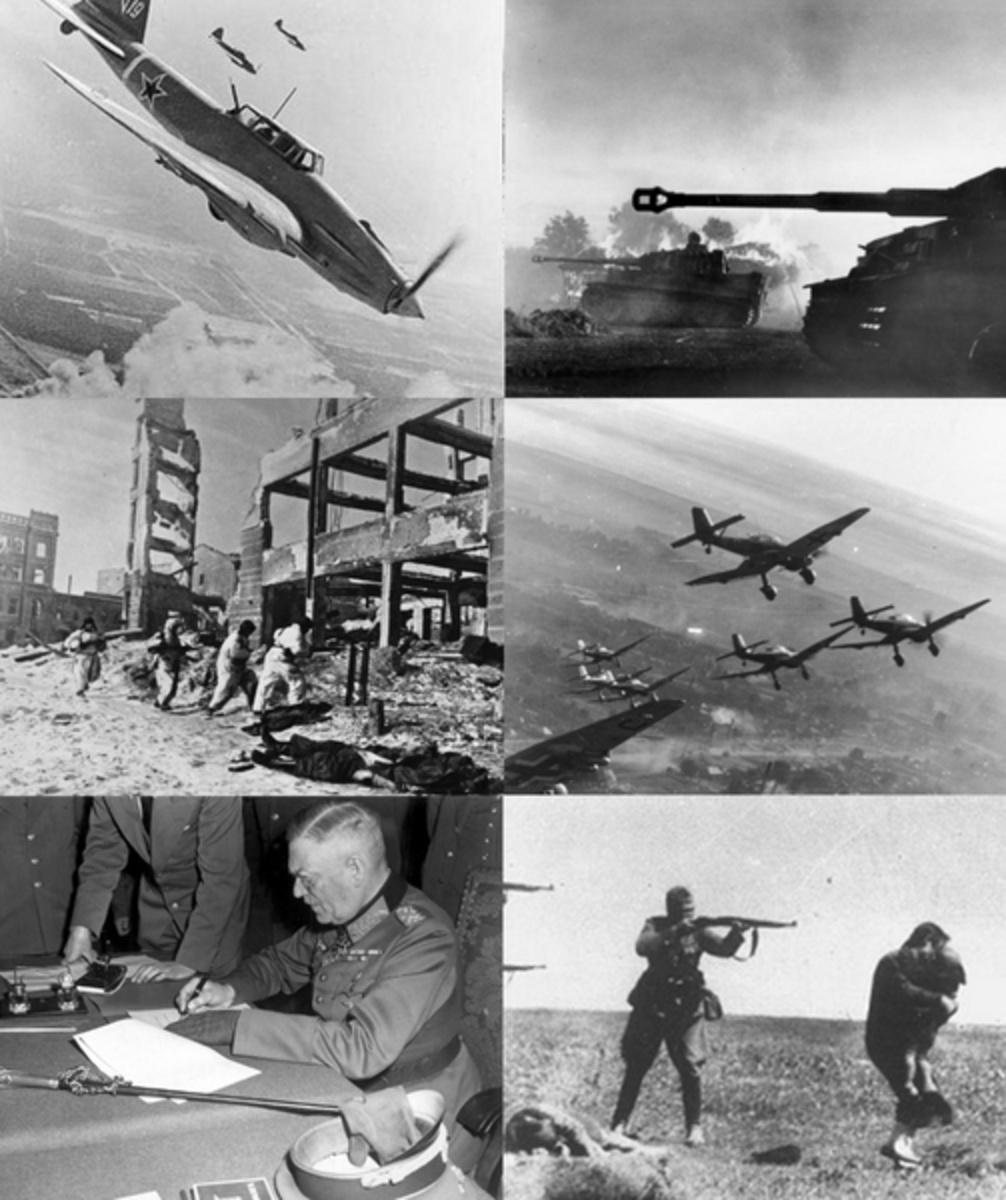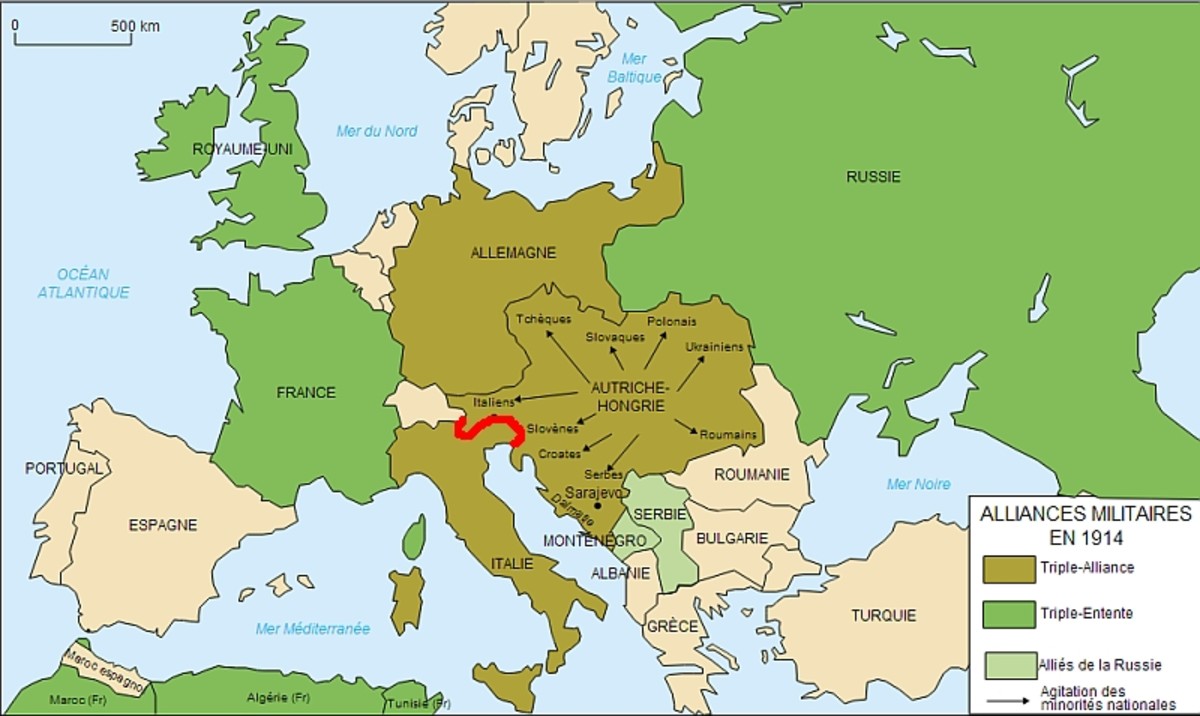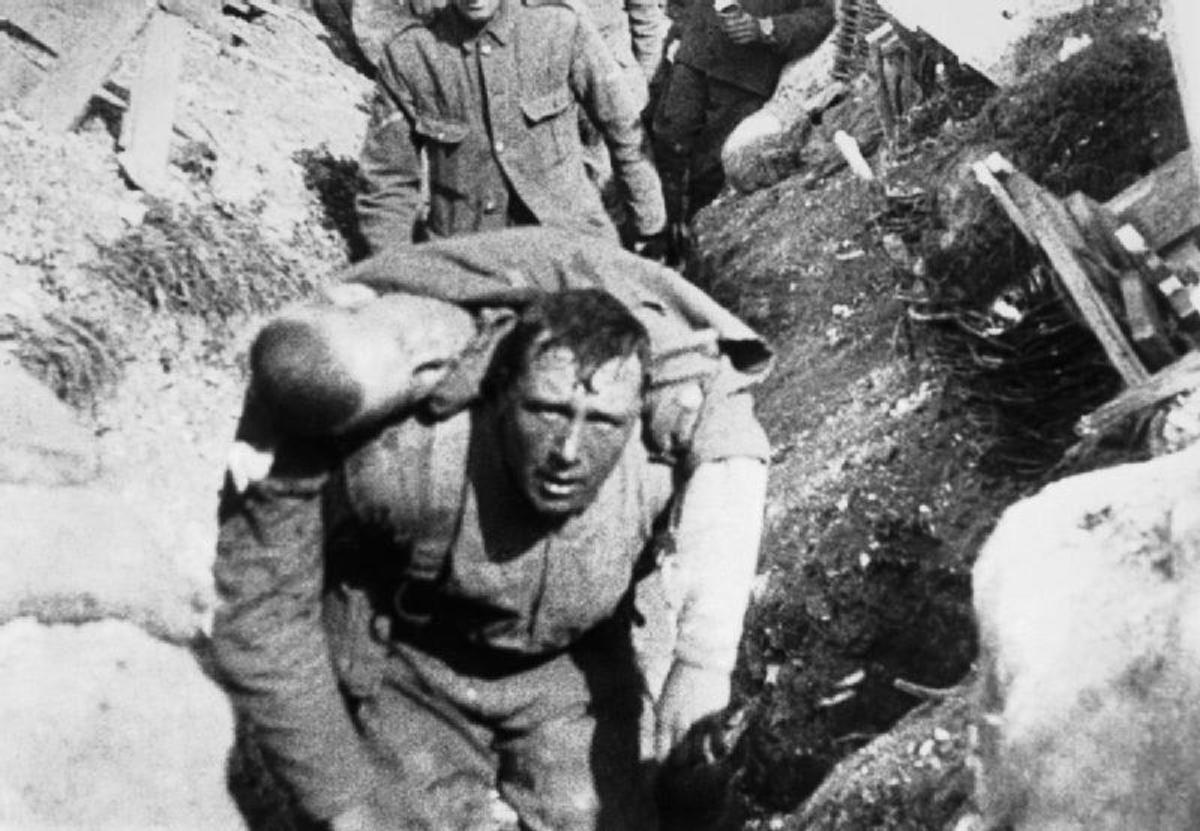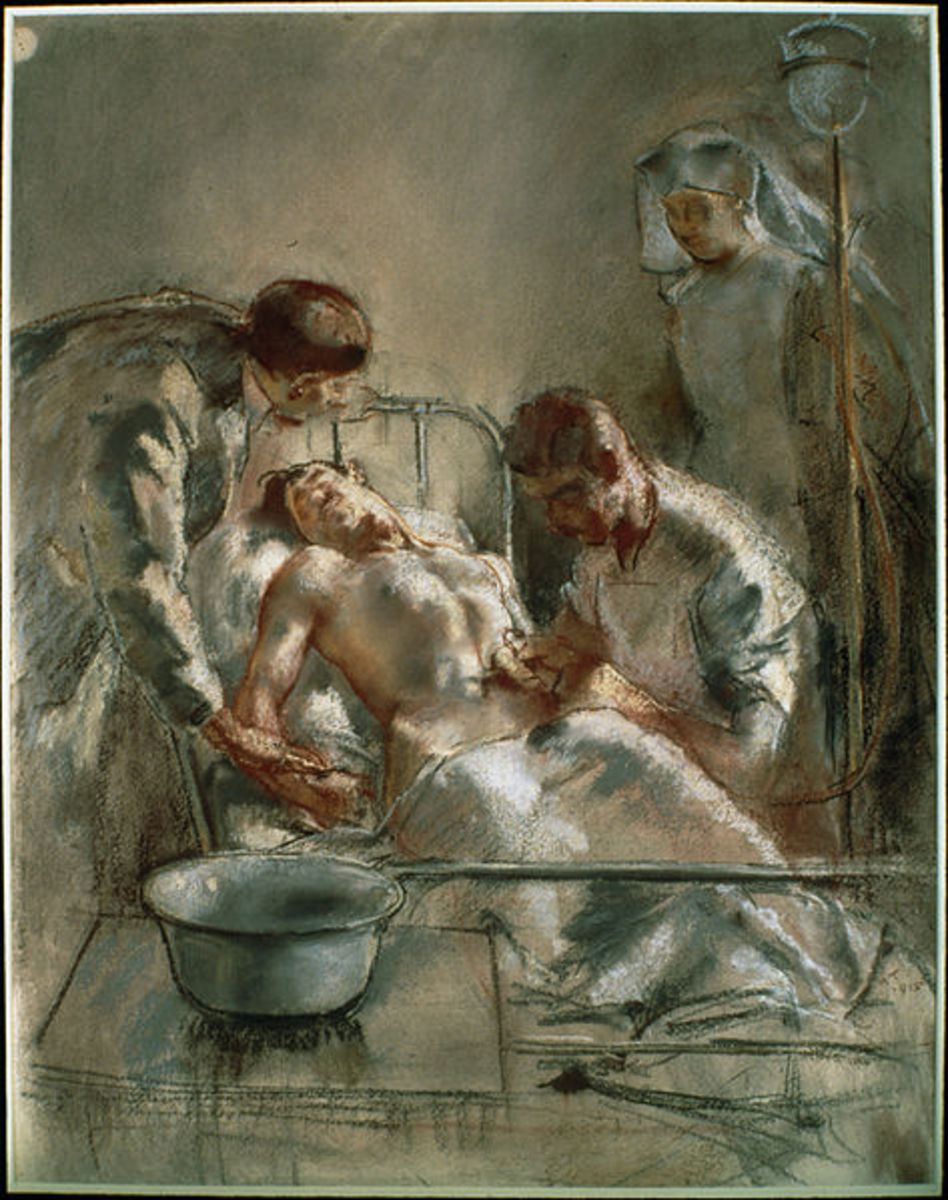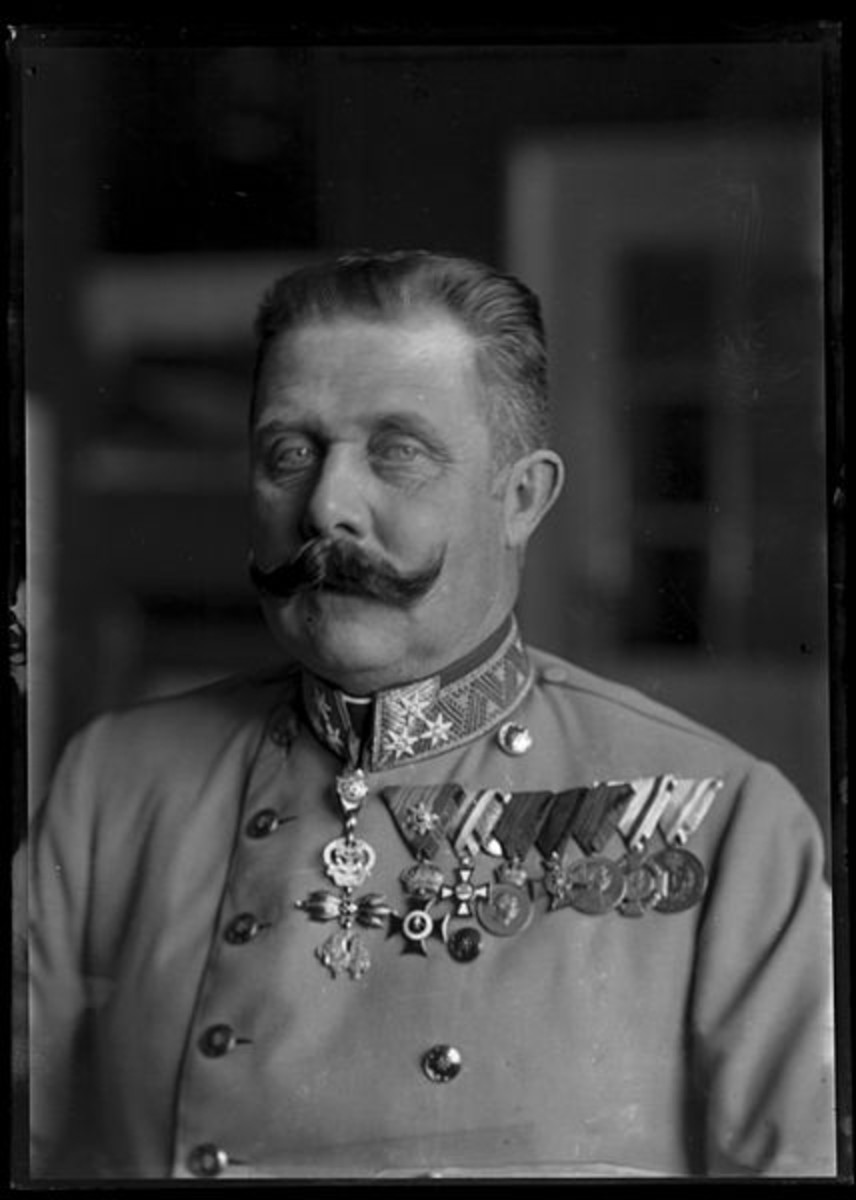- HubPages»
- Education and Science»
- History & Archaeology»
- History of the Modern Era»
- Twentieth Century History
World War I: The Outbreak Of War
Background
The origins of World War I lie in European rivalries, that stretched back more than forty years into the mid 19th century.
In 1871, the modern nation of Germany was born, and its rapid rise to military and industrial power, combined with its commercial and imperial ambitions in Europe, the Middle East and Africa alarmed its neighbours. The German defeat of France in 1871 had made the two countries bitter enemies. Germany therefore, constructed defensive alliances with first Austria-Hungary and then Italy, while France looked to Russia and Britain. A naval race between Britain and Germany added to the growing military tension.
Fearing war on two fronts against France and Russia, in 1905, the German Chief of the General Staff, General von Schlieffen drew up a plan for Germany to deliver a knock out blow against France, before turning to face the huge, but slow to mobilise Russian army.
Arrest
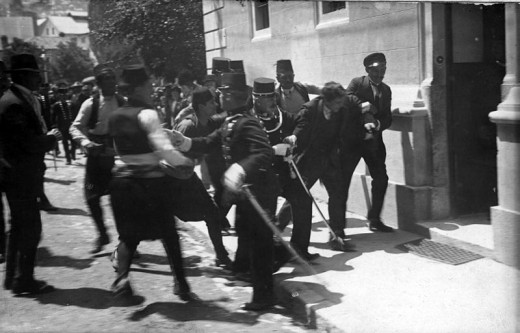
Reliving A Pivotal Day
"The lamps are going out all over Europe. We shall not see them lit again in our lifetime."
Sir Edward Grey, British Foreign Secretary, 3rd August 1914.
The Spark
On the 28th June 1914, Archduke Franz Ferdinand, heir to the Austro-Hungarian throne and his wife Sofia were making an official visit to Sarajevo to inspect military manoeuvres. Austria-Hungary had occupied the Turkish province of Bosnia-Herzegovina since 1878 and fully annexed it in 1908. Neighbouring Serbia resented this, as the province was mainly populated by Serbs, so relations between the two states were tense.
As the royal couple drove to an official reception at the town hall, a bomb was thrown into their car. It bounced off their rear canopy and exploded under the car behind, injuring two royal aides and 18 others. After the reception, the archduke changed his route out of the town but on the way, his driver took a wrong turning and halted. By chance, a group of conspirators involved in the earlier incident but not detained by the police were loitering there. One of them, Gavrilo Princip, a 19 year old student, leapt on to the car's running board and shot the royal couple at point blank range, hitting the archduke in the neck and his wife in the abdomen. They both died within a few minutes.
It was clear that Princip had not acted alone. He and his five fellow assassins were members of the Black Hand, a secret nationalist society led by Colonel Dragutin Dimitrijevic, head of Serbia's military intelligence. Austria-Hungary then accused the Serbian government of complicity in the assassination. It also asked its ally, Germany, for support against Serbia. When this was confirmed, Austria-Hungary issued an ultimatum on the 23rd July that would have effectively ended Serbian independence. Serbia's reply was received in the Austrian capital just two minutes short of the 48 hour deadline. It had agreed to almost all of Austria's demands, but also appealed to Russia for help and offered to refer the dispute to the International Court. The reply was rejected. The next day, the 26th July, Austria-Hungary mobilised its forces declaring war on Serbia on the 28th July. The countdown to World War had begun.
Mobilising For War
Scarlet And Blue
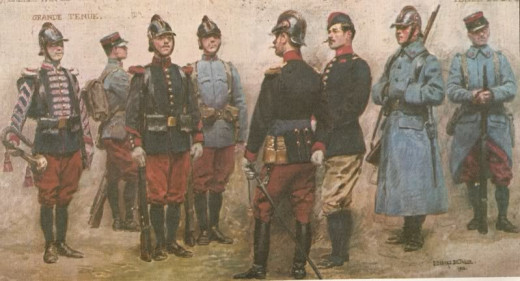
Germany's Attack On Belgium
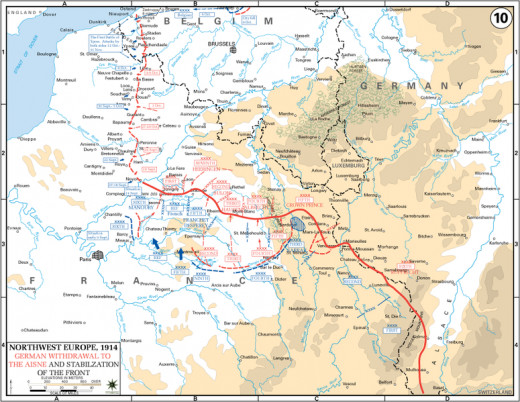
The Early Stages
Within just one week, Austria-Hungary's attack on Serbia transformed into a general European conflict. All of the continental powers were caught up in an arms' race with elaborate hopes to expand their armies whenever war threatened. Hundreds of thousands of reservists (men who had previously been given military training) were called up from civilian life. This process of mobilisation took time and was complicated; but no nation wanted to be left behind when its enemies sent their troops into the field.
On the 30th July Russia announced plans to mobilise its army in support of Serbia. Interpreting this mobilisation as a threat, the German military leadership set in motion their long established Schlieffen Plan for winning a war against Russia and France. The Germans anticipated that Russia would be the slowest nation to mobilise its massive armies. Face with war on two fronts, Germany planned to overpower France in a lightning offensive mounted through neutral Belgium, while fighting a holding action in the east. It would then its forces to Russia.
Committed to this plan, German leaders brushed aside last minute peace moves that might have interfered with their military deployment. The country declared war on Russia on the 1st August and on France on the 3rd August. The next day Germany invaded Belgium. Despite having a secret agreement to aid France in a war with Germany. Britain's Liberal government would have had difficulty leading the country into the war had it not been for the German invasion of Belgium. It was as a treaty guarantor of Belgian neutrality that Britain declared war on Germany on the 4th August.
Flag waving crowds greeted the declarations of war in all of the combatant cities. Although many people did not share this enthusiasm, few opposed the war at its outset. Political divisions were set aside for the moment- in Germany for example, the Russian threat drove most opposition Social Democrats to support the war effort. On the whole, the rapid mobilisation of mass armies was achieved with great efficiency. Civilian reservists everywhere reported for duty when called up. In Britain 750,000 men volunteered for military service within two months of the outbreak of war.
Thousands of trains- 11,000 in Germany alone by mid August- working to precise timetables, carried about six million men to railheads near the frontiers. The British Expeditionary Force (BEF)- a small professional force in contrast to the mass conscript armies on the Continent- shifted 100,000 men across the Channel and deployed them near the Franco-Belgian border.
At first the German offensive in the west, based as it was on optimistic assumptions, came surprisingly close to success. Implementing their Schlieffen Plan, German forces advanced swiftly over Belgium, overcoming the resistance of forts at Liege and Namur with heavy Krupp guns. The BEF, finding itself in the line of the German advance at Mons, was forced to retreat alongside its French allies. Meanwhile, large scale French offensives in Alsace and Lorraine were hugely costly failures, the supposed elan, or 'fighting spirit' of France's soldiers proving no match for heavy machine gun and artillery fire.
The Taxis Of The Marne
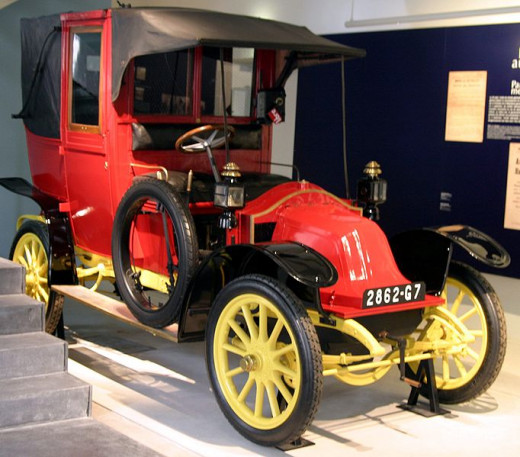
Failure Of The Schlieffen Plan
Helmuth Johann Ludwig von Moltke, Germany's chief of general staff, now began to advance his forces south from Belgium, intending to surround the French armies engaged in eastern France. Days of marching exhausted his footsore infantry, and his supply lines dependent upon horse drawn transport, became overextended. The line of advance also exposed his right flank to the Paris garrison. French Chief of Staff, General Joseph Joffre, pulled forces back from the eastern frontier to confront the invading soldiers, while General Joseph Gallieni, in charge of the defence of Paris, sent an army to attack the German flank. The combined counter-offensive, known as the First Battle of the Marne, drove the Germans back to the River Aisne in north-eastern France. Here, they entrenched in a strong defensive position. Believing that the collapse of the Schlieffen Plan meant that the war was lost, von Moltke suffered a nervous breakdown and was replaced as Germany's principal commander by Erich von Falkenhayn.
Meanwhile, on the Eastern Front, German calculations had been upset by the unexpected speed of Russian mobilisation. Faced with the Russian forces advancing into its province of East Prussia, Germany hastily transferred two army corps from the Western Front- a contributory factor in the failure of the Schlieffen Plan.
General Paul von Hindenburg and his chief of staff, General Erich Ludendorff, achieved an overwhelming victory at Tannenberg in East Prussia at the end of August. They killed or injured some 40,000 Russian troops, and took some 100,000 prisoner. The Russian commander, General Alexander Samsonov, killed himself. Meanwhile, Germany's Austro-Hungarian allies suffered reverses against the Russians in the Austrian province of Galicia, and also failed to overcome the Serbs.
Race To The Sea
On the Western Front in September 1914, there was still clear space for manoeuvre between the Aisne and the northern coast of France. The opposing armies now engaged in a 'Race to the Sea'. This involved a series of attempted outflanking movements, each of which was blocked in turn as infantry on both sides clashed and then dug themselves into defensive positions to protect themselves from each other.
Stalemate
The Germans fought successfully to overcome the remaining Belgian resistance around Antwerp, but ran into French and British forces in Flanders in October. There followed a series of vicious battles, known collectively as the First Battle of Ypres, which lasted into mid November. The sheer desperation and savagery of the fighting was typified by the deaths of 25,000 German student volunteers. Having received hasty training, the men had been thrown into the fighting, only to be mown down at Langemarck in what Germans call the Kindermord, or 'Slaughter of the Innocents'. The outcome of the battle was stalemate.
The onset of winter towards the end of 1914 brought a lull in the fighting on all fronts, with hopes of a rapid end to the war utterly dashed. However, both sides still intended to fight until victory was won; few considered trying to make a compromise peace.
The Rape Of Belgium
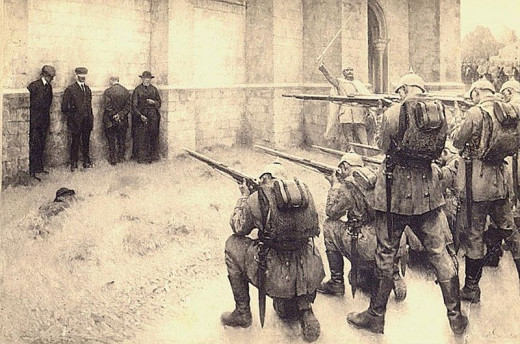
The Cost Of Fighting
At years end, the fighting had left German troops in control of almost all of Belgium and a swathe of northern France. The Allies' offensive strategy sought to regain this territory.
However, casualties were tragically high. Already, by the end of 1914, France had lost some 300,000 dead and Germany 240,000. Around one third of the British soldiers sent to France had been killed. Russia and Austria-Hungary each counted more than a million dead, wounded, or taken as prisoners of war.
A contributing factor to the very high casualties in 1914 was the lack of adequate head protection for soldiers. None of the combatants wore metal helmets. In 1915-16 steel helmets such as the British Brodie and the German Stahlheim were universally adopted.
Ideas about civilised behaviour in war had been disregarded. The actions of German forces in Belgium outraged world opinion and influenced the future policy of the United States. Although atrocities were exaggerated by Allied propaganda, the Germans did pursue a policy of Schrecklichkeit or 'fearlessness' to cow popular resistance. Massacres included the execution of more than 600 civilians in the Belgian town of Dinant.
© 2014 James Kenny

